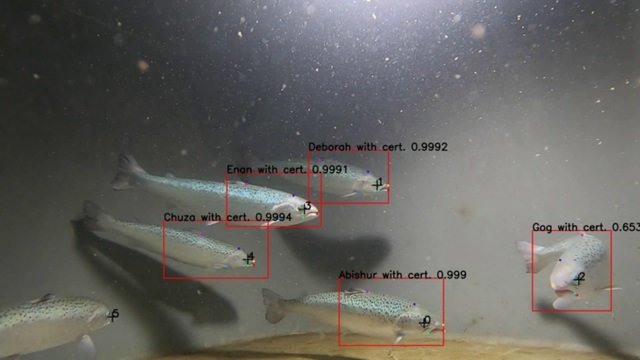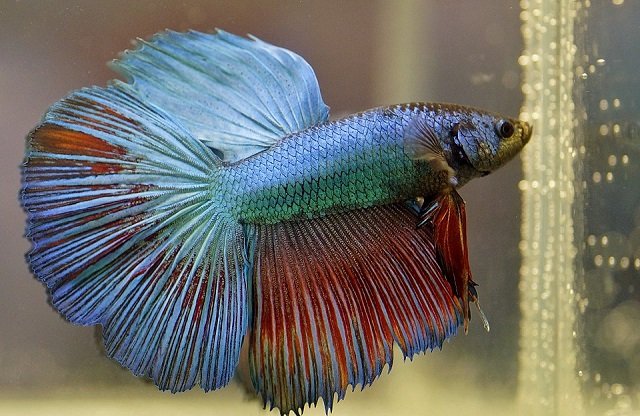
Aquaculture, especially salmon farming, has grown tremendously in recent decades. However, this growth presents unique challenges, particularly in monitoring fish welfare in intensive farming environments.
In Norwegian marine cages, for example, there can be up to 200,000 salmon in a single structure, making individual observation extremely difficult. Fortunately, computer vision is emerging as a powerful tool to overcome these obstacles, enabling continuous, automated, and non-invasive monitoring of fish health.
Researchers from the Norwegian University of Science and Technology, the Norwegian University of Life Sciences (NMBU), and SINTEF Ocean have used camera technology combined with artificial intelligence to monitor and analyze the respiratory rates of individual fish.
Why is monitoring fish welfare important?
Fish welfare is not just an ethical concern. Stressed or sick fish grow more slowly, are more susceptible to diseases, and have lower meat quality. Monitoring their health allows aquaculturists to take preventive and corrective measures, optimizing production and reducing losses.
“Fish respiratory rate is important because it provides valuable information about their welfare,” says SINTEF researcher Christian Schellewald.
Computer vision to the rescue
Computer vision uses cameras and artificial intelligence algorithms to analyze images and videos, extracting valuable information about fish. Instead of relying on human observation, which is costly, labor-intensive, and subjective, computer vision offers an objective and scalable solution.
The technology is expected to contribute to more humane salmon treatment, reduced handling, fewer interventions, and lower mortality rates. The research was recently published in two scientific papers.
How does it work?
Computer vision systems for aquaculture generally consist of several modules:
Stay Always Informed
Join our communities to instantly receive the most important news, reports, and analysis from the aquaculture industry.
- Detection and tracking: Deep neural networks detect individual fish in underwater videos and track their movements over time. This is crucial for analyzing each fish’s behavior over time.
- Feature analysis: Algorithms analyze fish physical and behavioral characteristics, such as respiratory rate, mouth opening, presence of wounds or deformities, and swimming speed.
- Respiratory rate estimation: An innovative method involves analyzing fish mouth movements to estimate their respiratory rate. This is achieved through optical flow analysis, which measures the apparent movement of objects between successive video frames. This approach enables non-invasive measurement of fish ventilation, a key indicator of metabolic and stress status.
- Re-identification: Unique characteristics, such as melanin patterns on the fish’s skin, are used to re-identify individuals over time. This allows for long-term tracking of each fish’s welfare.
Application examples
- SaBRE (Salmon Breathing Rate Estimation): This system uses computer vision to estimate individual salmon respiratory rates, monitoring their response to environmental changes such as decreasing dissolved oxygen levels or the presence of disturbances. Experiments have shown a negative correlation between respiratory rate and oxygen content, as well as an increase in respiratory rate in response to stressful events.
- Mouth opening monitoring: Another approach focuses on measuring the frequency of salmon mouth opening as an indicator of their ventilation rate. This method uses object detection networks to identify specific salmon features, such as the head, eyes, snout, and mouth, and then applies optical flow analysis to the snout region to assess ventilation rates.
Fish respiration
“Thanks to algorithms, we can recognize fish and simultaneously analyze their respiratory movements,” explains Schellewald.
He states that camera technology can observe a fish’s breathing if its mouth is visible. Therefore, fish are filmed horizontally, from the side.
The main focus is on the fish’s snout, which moves as the upper and lower jaws open and close.
“We have discovered that lower oxygen levels make salmon breathe faster. We observed the same reaction when we increased the water temperature. Stress also causes an increase in respiratory rate,” says Judit Vas, a behavioral biologist at NMBU.
This technique provides researchers with a “digital eye” that allows them to monitor multiple fish simultaneously. This is important because it provides more data to work with.
Implications for the aquaculture industry
The research project aims to improve our understanding of fish welfare under different environmental conditions.
“By allowing farmers and researchers to monitor and analyze fish respiratory rates at an individual level, the technology can help improve the quality of farmed salmon,” says Schellewald.
“Fish may have visible wounds or other injuries, but by then, they are already hurt. The ability to detect warning signs at an earlier stage would be a major breakthrough for the industry. In turn, this will likely lead to a reduction in drug use, fewer interventions, and lower mortality rates,” says Vas, whose work has sparked great interest in the sector.
According to studies, computer vision has several important implications for the aquaculture industry:
- Enhanced fish welfare monitoring: Computer vision enables continuous, automated monitoring of fish behavior and health, allowing aquaculturists to quickly identify and address welfare issues. This is especially important in salmon farms, where large numbers of fish make individual observation difficult.
- Early detection of health issues: By analyzing computer vision data, aquaculturists can identify early signs of disease or stress in fish, enabling preventive measures and reducing losses. For example, changes in respiratory rate can indicate hypoxia or gill disease.
- Optimization of farming conditions: Computer vision can help aquaculturists optimize farming conditions to promote fish growth and welfare. Monitoring dissolved oxygen levels and water temperature, along with computer vision data, can help farmers adjust environmental parameters to ensure optimal conditions.
- Reduced reliance on human observation: Computer vision reduces the need for human observation, which is costly, labor-intensive, and subjective. This allows aquaculturists to monitor fish populations more efficiently and accurately.
- Improved feeding efficiency: Computer vision can be used to monitor fish feeding behavior, enabling aquaculturists to optimize feeding rates and reduce waste.
- Increased sustainability: By improving fish welfare and optimizing farming conditions, computer vision can contribute to more sustainable aquaculture. This is increasingly important as aquaculture seeks to meet the growing global demand for seafood.
- Economic viability: Computer vision, combined with machine learning, represents a cost-effective and efficient solution for automated and non-invasive salmon observation.
Challenges and the future
Despite its potential, computer vision in aquaculture faces challenges such as variable lighting conditions, water turbidity, and fish overlap. However, advances in deep learning algorithms and the development of more robust underwater cameras are overcoming these obstacles.
In the future, computer vision is expected to play an even greater role in aquaculture, enabling early disease detection, feeding optimization, and overall improvement in fish welfare. This technology has the potential to transform aquaculture into a more efficient, sustainable, and ethical industry.
Conclusion
Computer vision is a promising and increasingly important tool for monitoring fish welfare in aquaculture. It enables automated, continuous, and non-invasive observation of large fish populations, overcoming the limitations of traditional human observation methods.
Respiratory rate analysis, whether through jaw or gill movement, is a key indicator of fish welfare and health status. Computer vision allows for objective and continuous measurement of this parameter, facilitating early detection of issues such as stress, hypoxia, or gill diseases.
Despite advancements, computer vision in aquaculture still faces challenges such as variable lighting conditions, water turbidity, and the need for robust algorithms for individual fish tracking. However, ongoing research and the development of new technologies are overcoming these obstacles.
The successful implementation of computer vision systems in aquaculture has the potential to significantly improve the efficiency, sustainability, and ethics of the industry. By providing valuable insights into fish conditions, this technology enables aquaculturists to optimize farming conditions, reduce losses, and enhance overall animal welfare.
Reference
Høgstedt, E. B., Schellewald, C., Mester, R., & Stahl, A. (2025). Automated computer vision based individual salmon (Salmo salar) breathing rate estimation (SaBRE) for improved state observability. Aquaculture, 595, 741535. https://doi.org/10.1016/j.aquaculture.2024.741535
Schellewald, C., Saad, A., & Stahl, A. (2024). Mouth Opening Frequency of Salmon from Underwater Video Exploiting Computer Vision. IFAC-PapersOnLine, 58(20), 313-318. https://doi.org/10.1016/j.ifacol.2024.10.072
Editor at the digital magazine AquaHoy. He holds a degree in Aquaculture Biology from the National University of Santa (UNS) and a Master’s degree in Science and Innovation Management from the Polytechnic University of Valencia, with postgraduate diplomas in Business Innovation and Innovation Management. He possesses extensive experience in the aquaculture and fisheries sector, having led the Fisheries Innovation Unit of the National Program for Innovation in Fisheries and Aquaculture (PNIPA). He has served as a senior consultant in technology watch, an innovation project formulator and advisor, and a lecturer at UNS. He is a member of the Peruvian College of Biologists and was recognized by the World Aquaculture Society (WAS) in 2016 for his contribution to aquaculture.




